Imagine this: it’s winter, and you’re visiting England, Scotland, Norway, or one of the other countries that borders the North Sea. While you’re at the beach, you think, “Can you swim in the North Sea in winter?” Well, you’re asking the right people, because we’ve done the research and will answer your question in this article.
Although many people swim in the North Sea in the winter, it should be avoided unless you’re an experienced swimmer who is accustomed to cold water. Even if that describes you, you still need to take precautions to make sure you don’t suffer from hypothermia or shock. Here are some ways you can safely swim in cold water:
- Avoid water that’s colder than 55 degrees F (12 degrees C) if you’re unaccustomed to cold water
- Prep your body with frequent cold showers plus light cardio before you get in the water
- Dress for freezing temperatures
- Enter the water slowly
- Warm up immediately after your swim (but avoid hot showers!)
You should also avoid swimming in the North Sea in the winter if you have heart or circulation issues. Please contact your doctor before trying cold weather swimming to be sure!
In the rest of this article, we’ll show you how to prepare for a winter North Sea swim and share additional information. So, without further ado, let’s get started!
Can You Swim In The North Sea In Winter?
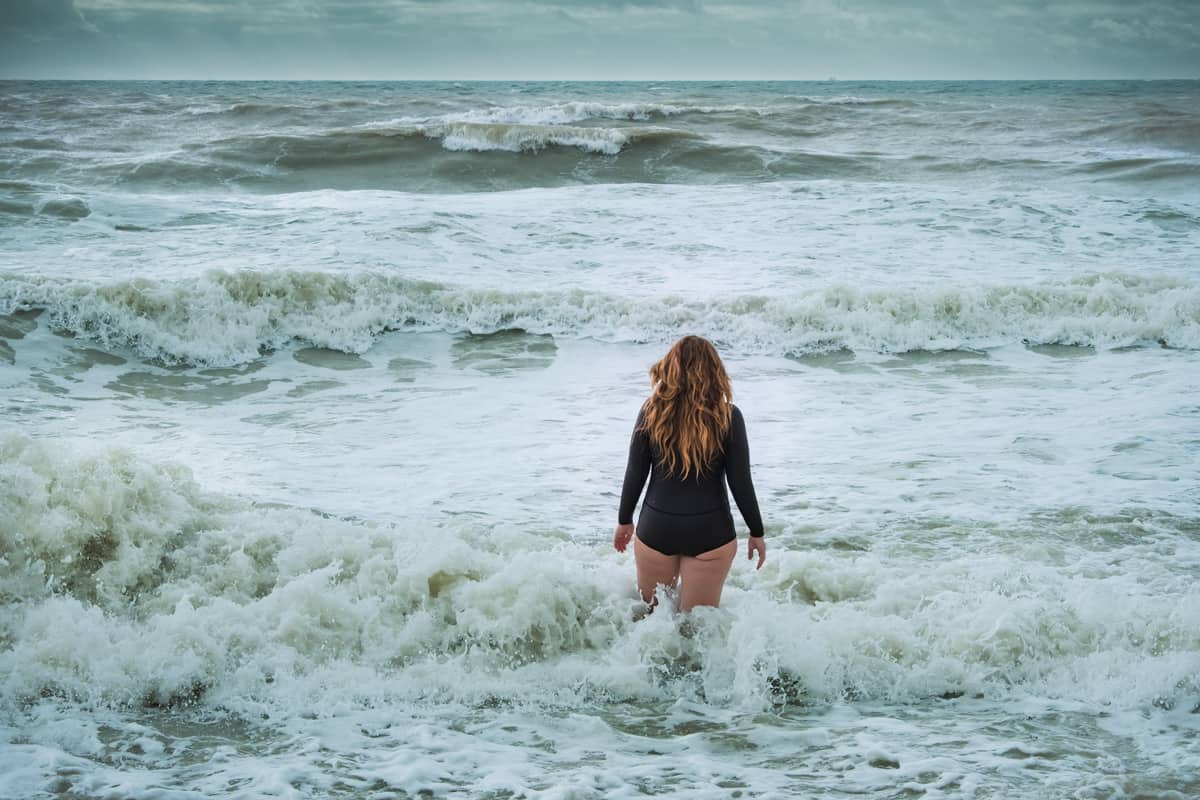
Although people often swim in the North Sea in the winter, doing it safely comes with caveats. Your body is at risk of hypothermia or shock if you expose it to water that is below 45 degrees F (7 degrees C).
For that reason, if you’re an inexperienced swimmer, live in a warm climate, or have problems with your circulation or heart, swimming in the North Sea in winter is probably not the best choice.
However, winter swimming in the North Sea could be a fun challenge if you’ve conditioned your body to withstand cold water and have no underlying health conditions.
How Can I Safely Swim In The North Sea In Winter?
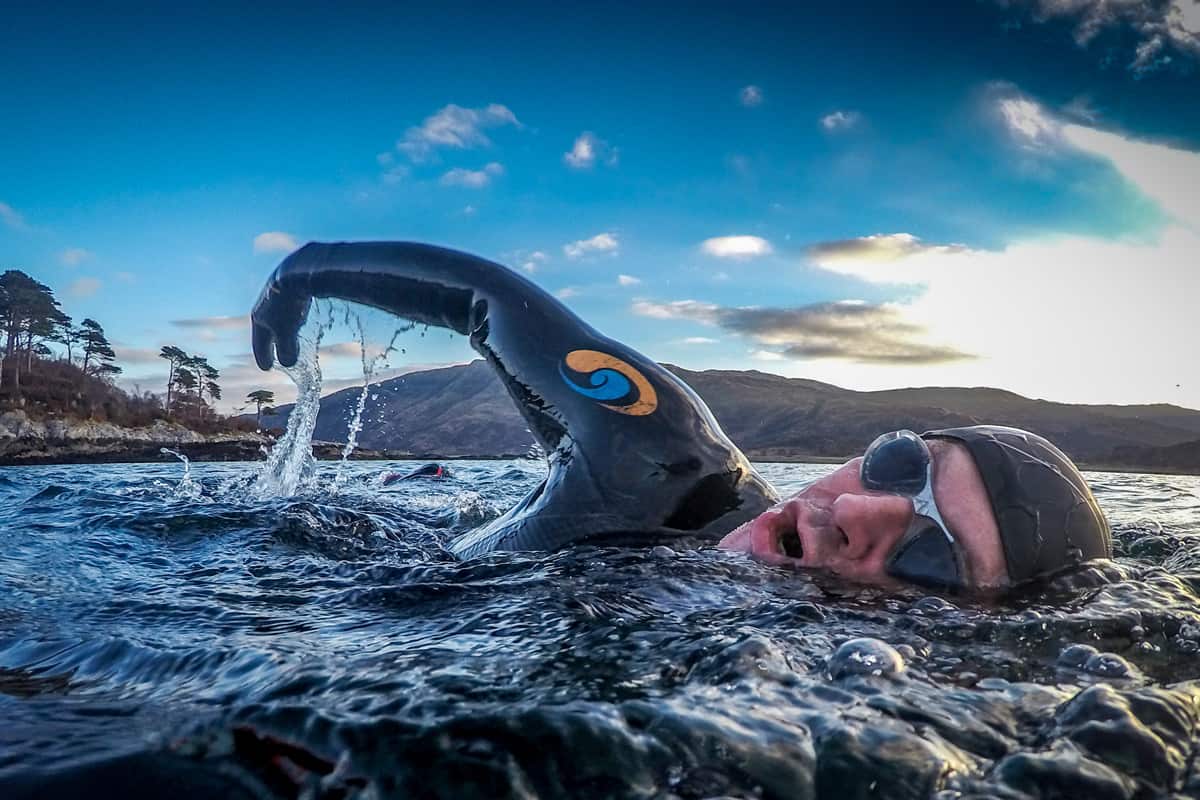
Here are a few things you can do before, during, and after your swim to make sure you have a safe and enjoyable experience:
Avoid Water That's Too Cold
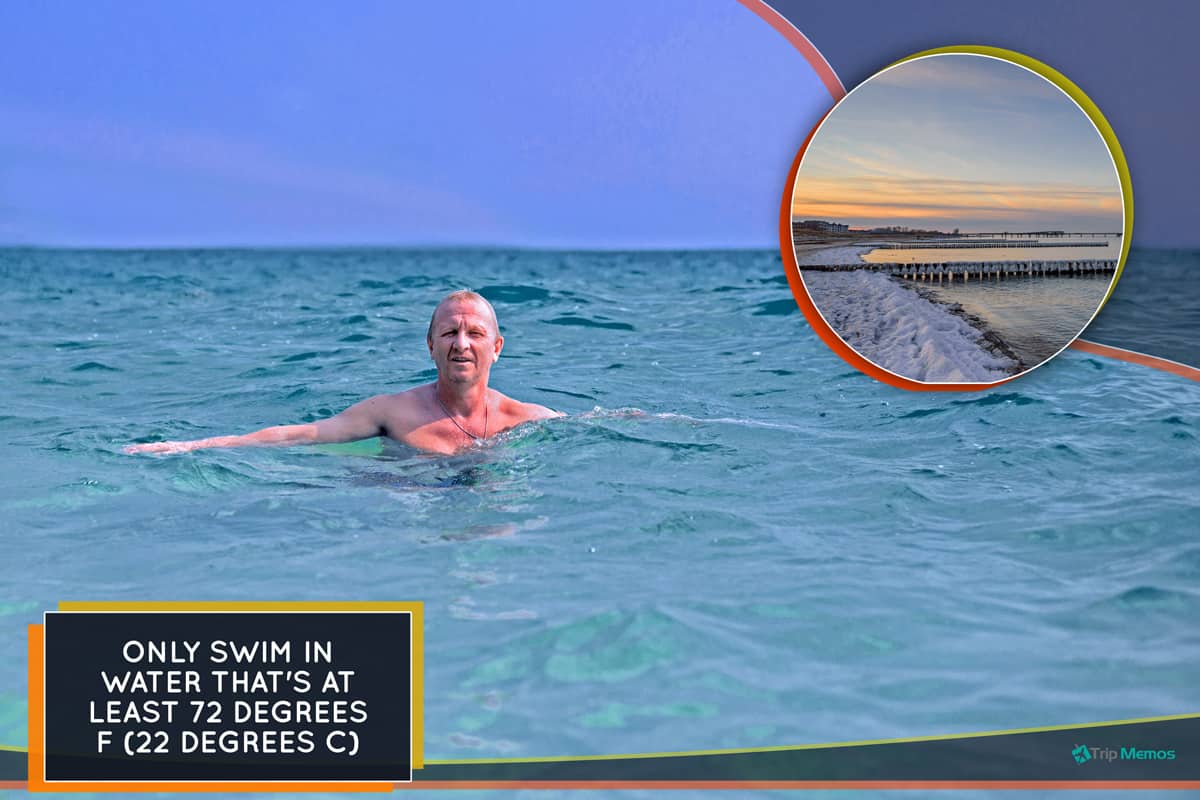
If you’re unaccustomed to cold water, you should avoid water that’s colder than 55 degrees F (12 degrees C). You may be unaccustomed to cold water if you always take hot showers, only swim in water that's at least 72 degrees F (22 degrees C), or live in a warm climate.
If you are accustomed to cold water through taking cold showers or living somewhere cold, you may be able to handle water that is a little colder. To be safe, though, you should always stay close to shore and never swim by yourself.
Click here to find real-time North Sea temperature updates.
Prep Your Body
If you know before your trip that you want to swim in the North Sea in winter, you can prepare your body.
First, start by taking frequent cold showers. Turn the tap all the way to cold for thirty seconds at the end of each shower. Eventually, you can work your way up to several minutes of cold or using cold water for the entire shower.
If you swim outdoors in the place where you live, you can also start getting accustomed to cold water by swimming when it’s cold out. Just follow the safety recommendations in this article to make sure you don’t shock your body.
On the day of your swim, do some light cardio before you get in the water. You could try running, jumping jacks, jogging in place, or whatever other cardio you prefer. This raises your body’s internal temperature, which in turn makes it easier for you to stay warm when in the water.
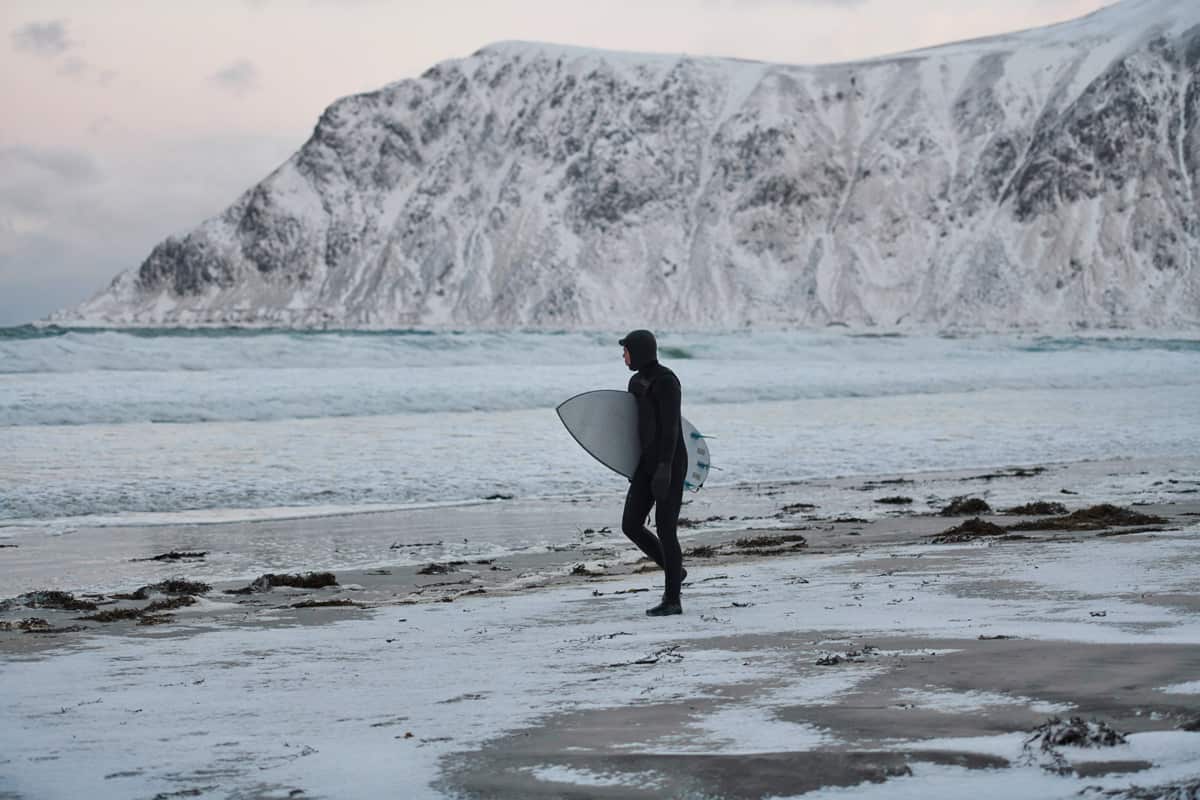
Dress Appropriately
To help your body retain heat, wear a neoprene wetsuit that’s at least 1/8 to 1/4 inch thick (4 to 6 mm). Make sure it’s flexible enough so you can move freely but thick enough to provide protection from the elements. You might also want to protect your extremities by adding neoprene gloves or booties.
In addition to your wetsuit, consider wearing goggles so you can easily open your eyes underwater. This could help you feel less panicked during the initial moments of going underwater in the cold. You might also want to wear a flotation device in case you become fatigued or get a cramp.
Check out this wetsuit on Amazon.
Start Slowly
You might be tempted to just get it over with by jumping into the icy cold water, but resist the urge! Instead, allow your body to adjust to the temperature by following these tips:
- Start by splashing water on your face or dipping your bare hands in the water to let your body adjust to the temperature.
- Slowly wade into the water so that your body gradually gets used to the change in temperature. If you just jump in, you might experience hypothermia or shock.
- Keep breathing! This is very important. As the cold water comes in contact with your body, your heart will naturally speed up, and you may experience shortness of breath. This is completely normal, so the important thing is to keep yourself calm as your body adjusts. One of the best ways of doing this is by breathing slowly through your nose. This type of breathwork signals to your body that it’s safe to relax.
- Listen to your body. If anything feels painful or concerning, be prepared to stop and reassess the situation.

Warm Up Right Away
Immediately after you get out of the water, wrap up in a blanket, robe, or other long, thick garment. Quickly change into dry clothes underneath the blanket or robe.
After you’ve changed, put on a hat to avoid losing heat through the top of your head. You also might want to add mittens or gloves. Don’t forget your feet! Try wearing thick, warm socks under hiking boots or snow boots.
After you’ve bundled up, have a hot drink to warm up the inside of your body. You should pack it in a thermos before heading to the ocean, so you don’t have to drive anywhere to get it.
You could also try bringing broth or soup, especially if you plan to go on a particularly long swim. The protein will help restore any lost muscle mass while warming you up inside.
Just as you allowed your body to gradually become accustomed to the cold, you should also slowly reacclimate to warmth. Resist the urge to take a hot shower! If you reintroduce heat too quickly, your blood vessels might open up too rapidly and cause lightheadedness or fainting.
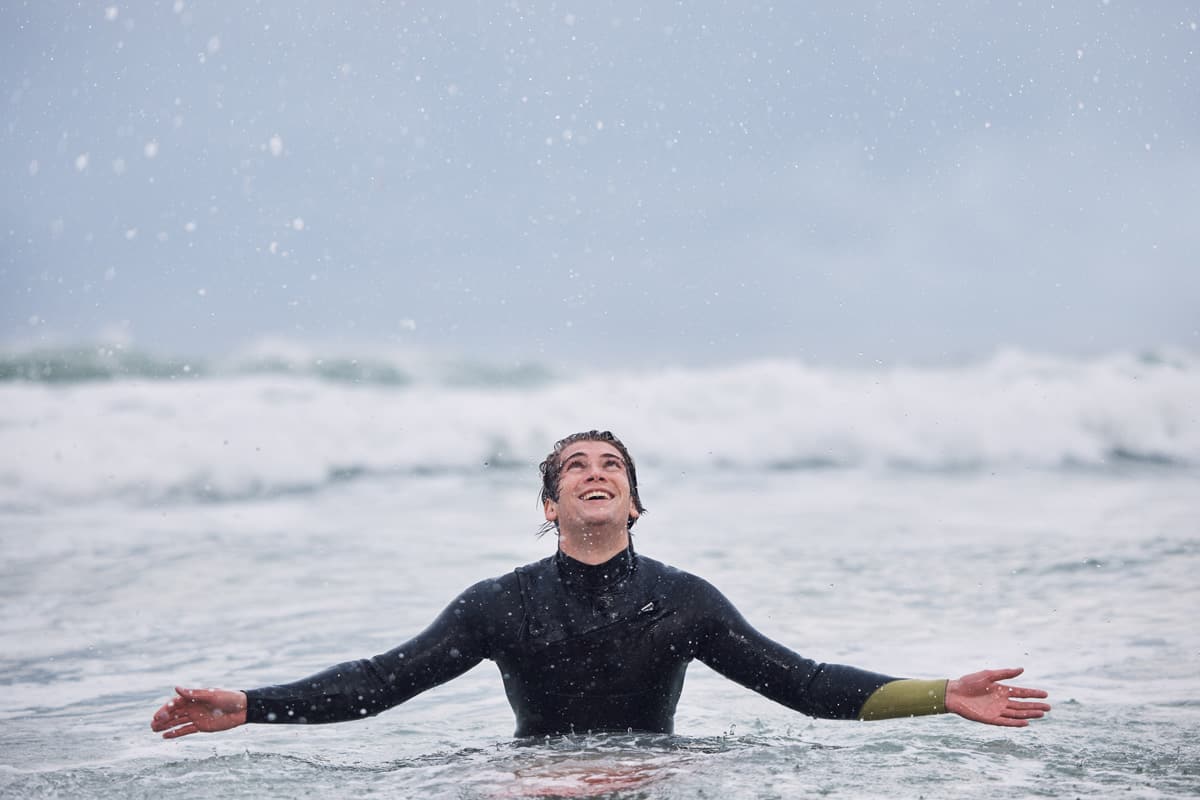
What Are The Benefits Of Swimming In The North Sea In Winter?
If you’ve read this far, you’re probably already aware that swimming or even showering in cold water offers some great mental and physical health benefits. Let’s check them out!
Improved Circulation
When your body gets hot, blood rushes to your skin. But when it gets cold, the blood rushes back inside your body to protect your internal organs. That’s the science behind sauna routines when you heat yourself up and then plunge into freezing water.
This process helps your body flush fresh blood through your veins and teaches your body to circulate blood more efficiently. This has many advantages, including regulating body temperature and giving your skin a glowing appearance.
Boosted Immune System
It might seem counterintuitive, but swimming in cold water can help boost your immune system! That’s because the shock of cold water exposure can help raise white blood cell counts, which help defend the body against illness. Plus, swimming in cold water can boost your metabolic state, which also increases your immune response.
Improved Mood And Willpower
If you’ve ever swum or showered in cold water, you may have been surprised by how good it feels mentally.
That’s because your brain releases endorphins to distract you from the unpleasant sensation of being cold. It also floods your body with neurotransmitters such as dopamine, which can make you feel a sense of accomplishment and want to do it again!
In addition to a feel-good cocktail of brain chemicals, swimming in cold water can help your mind develop good habits. For example, it takes a lot of willpower to decide to stay in icy water for longer than a few seconds. Dealing with the sensations of a cold swim also teaches your brain that it can withstand stressful situations.
Both of these are important lessons that you can use throughout your life.
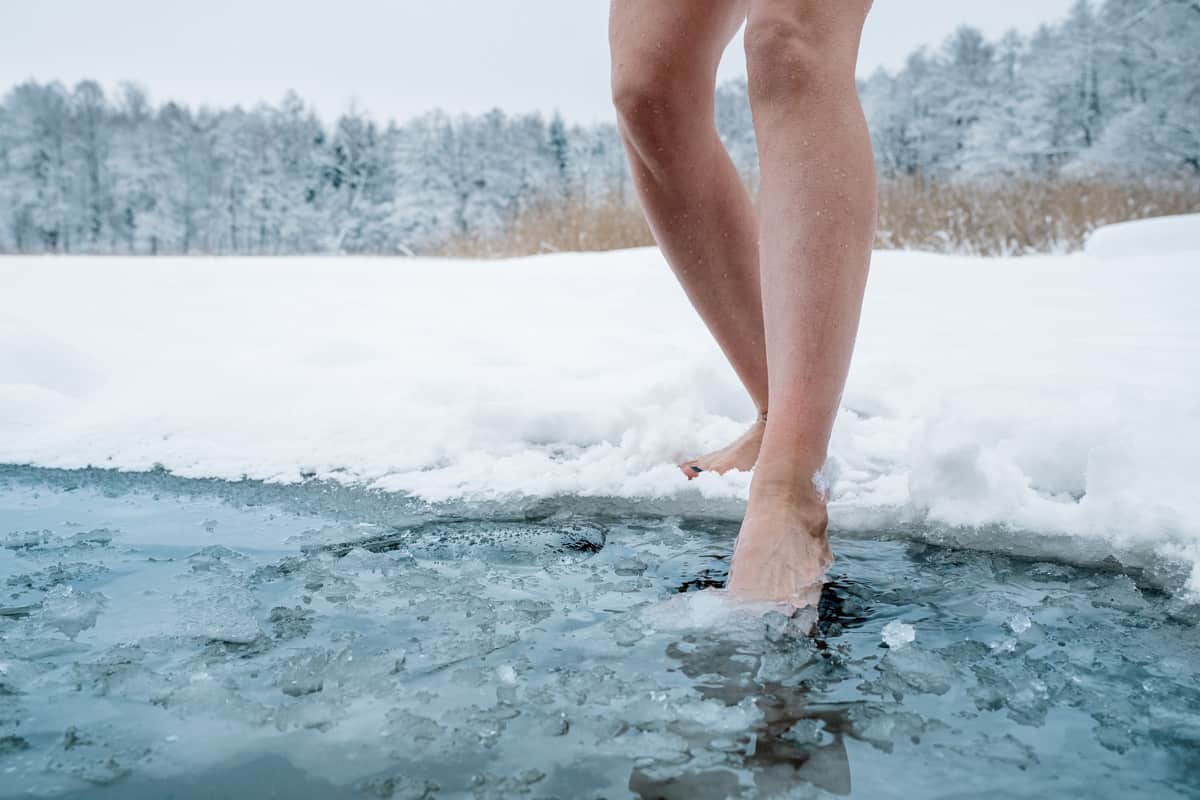
In Closing
Swimming in the North Sea in winter is possible, but you should follow some guidelines to stay safe. These include:
- Only swim if you’re an experienced swimmer who is conditioned to withstand cold water and has no preexisting health conditions (especially heart or circulation issues)
- Wear the right gear to stay warm
- Prep your body before swimming
- Slowly enter the water and gradually warm up afterward
You might find these articles helpful if you're visiting countries bordering the North Sea or interested in other cold-weather swimming options:
What Plug Adapter Do You Need For The UK?
Baths In Iceland - Driving Trip Planner [Inc. Sample Itineraries]

